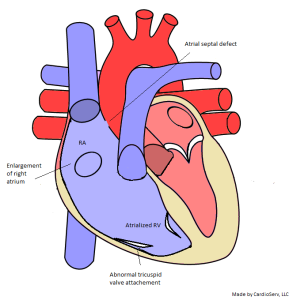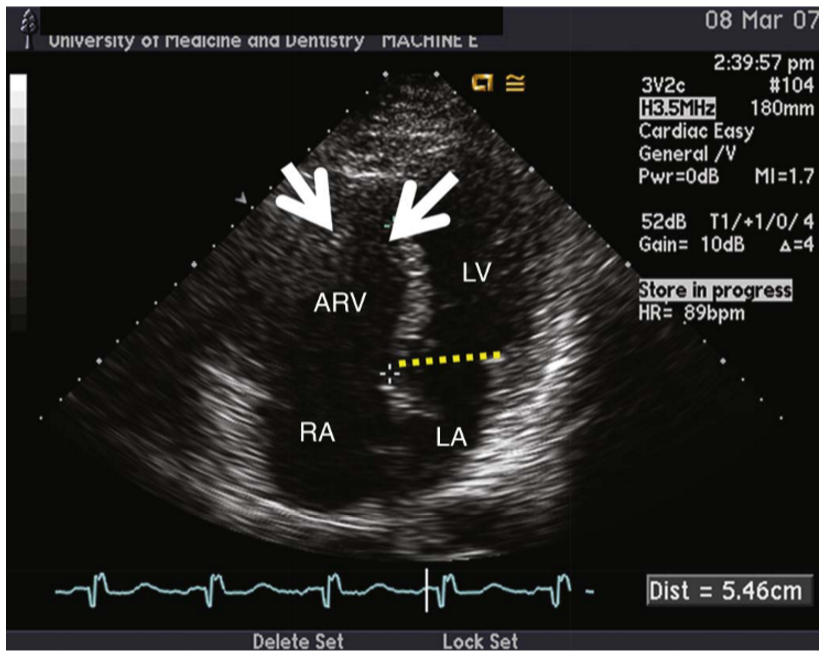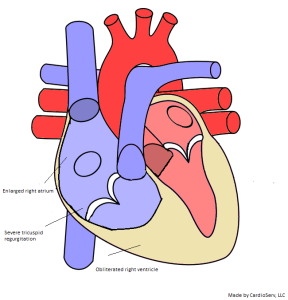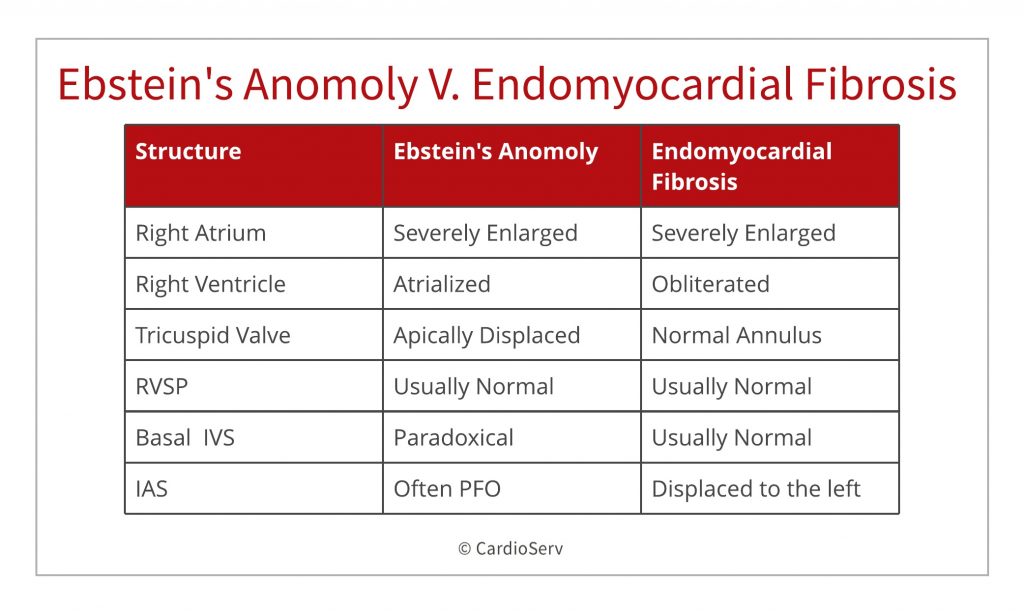
a) Ebstein’s anomaly of tricuspid valve
b) Idiopathic dilatation of right atrium
c) Endomyocardial fibrosis
d) None of the above
Continue reading to find out the answer.
The correct answer is c) Endomyocardial fibrosis.
This week we stumped a lot of you with Cardiophile’s Echo Quiz. The most common answer we got from our followers was Ebstein’s anomaly and it is easy to see why as both diseases share marked enlargement of the right atrium. Let’s discuss the two diseases and how to differentiate them.
Ebstein’s anomaly is a rare congenital heart disorder characterized by the failure of the tricuspid valve to delaminate from the right ventricle during development. The main features of Ebstein’s anomaly are tricuspid leaflet dysplasia, apical displacement of tricuspid annulus and abnormalities in the right atrium and right ventricle. The apical displacement of the functional tricuspid annulus is large (8 mm/m2).


(4) From Dynamic Echocardiography: Ebstein’s anomaly on transthoracic echocardiogram. Apical four-chamber view of a transthoracic echocardiogram in a patient with Ebstein’s anomaly reveals apical displacement of the functional tricuspid annulus (arrows) 5.46 cm away from the mitral annulus (dotted line). This displacement creates an atrialized portion of the right ventricle (ARV). RA, Right atrium; LA, left atrium; LV, left ventricle.
Endomyocardial fibrosis is an idiopathic disorder characterized by the development of restrictive cardiomyopathy, most notably fibrosis and obliteration of right ventricular apex and aneurysmal atrial enlargement. It is often seen in tropical countries in the developing world. Right ventricular outflow is spared resulting in RV outflow pulsations. Thrombi or spontaneous echo contrast may be seen in right atrium and ventricle. Severe low velocity tricuspid regurgitation is common. A high velocity TR is only seen if accompanied with pulmonary hypertension or mitral stenosis.


Both Ebstein’s anomaly and endomyocardial fibrosis are rare diseases that presents with massive right atrial enlargement. To differentiate between Ebstein’s anomaly and endomyocardial fibrosis with echocardiography there are two key signs to look for – the presentation of the right ventricle and the location of the tricuspid annulus. In Ebstein’s anomaly the right ventricle is dilated and atrialized. In endomyocardial fibrosis, the right ventricle is fibrotic and obliterated. In Ebstein’s anomaly the tricuspid valve is notably deformed and apically displaced while in endomyocardial fibrosis although there is severe tricuspid regurgitation there is no tricuspid annulus displacement (> 8mm/m2).





Jan
2021
Jan
2021
Jan
2021